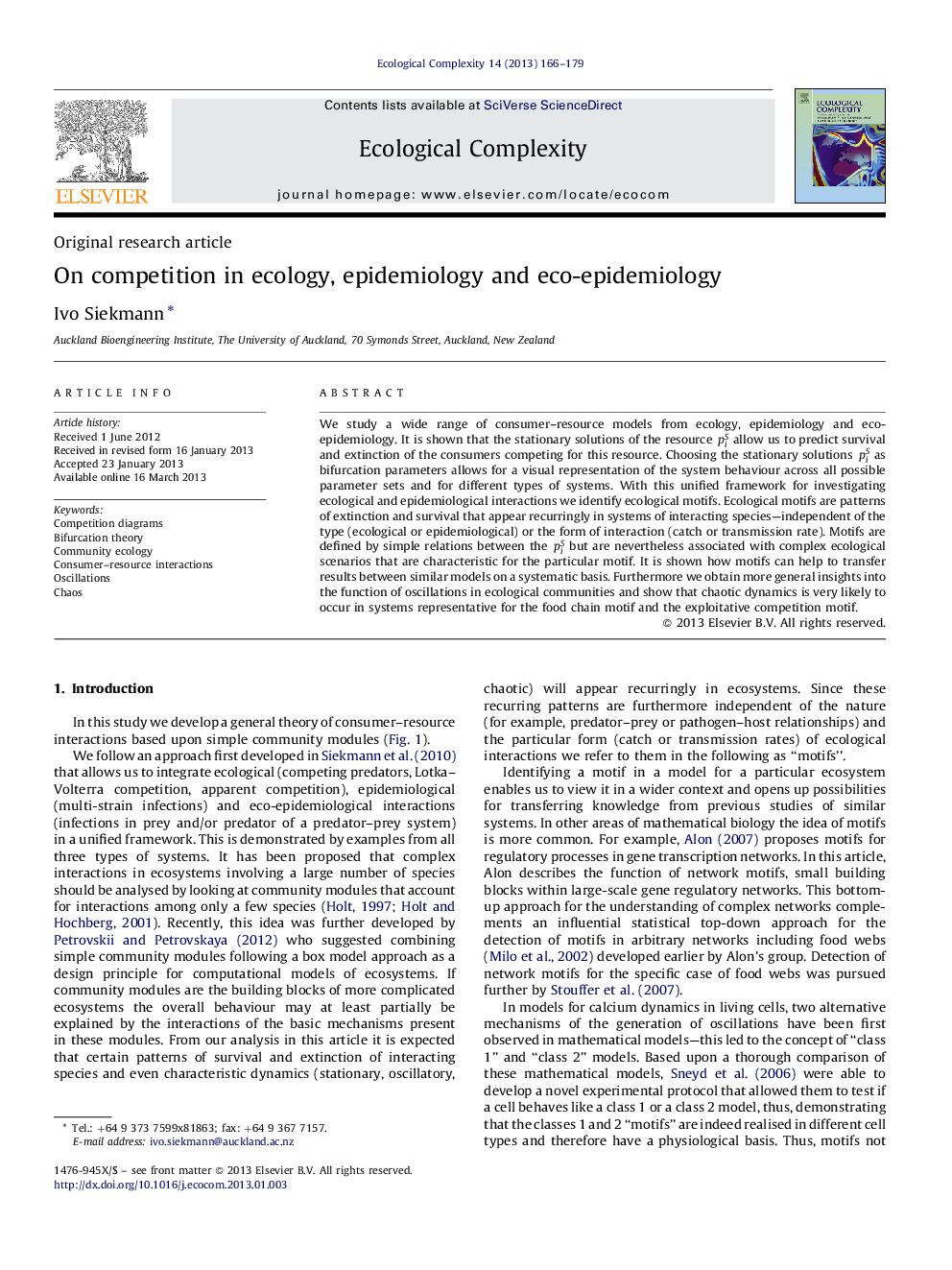| Article ID | Journal | Published Year | Pages | File Type |
|---|---|---|---|---|
| 4372501 | Ecological Complexity | 2013 | 14 Pages |
We study a wide range of consumer–resource models from ecology, epidemiology and eco-epidemiology. It is shown that the stationary solutions of the resource piS allow us to predict survival and extinction of the consumers competing for this resource. Choosing the stationary solutions piS as bifurcation parameters allows for a visual representation of the system behaviour across all possible parameter sets and for different types of systems. With this unified framework for investigating ecological and epidemiological interactions we identify ecological motifs. Ecological motifs are patterns of extinction and survival that appear recurringly in systems of interacting species—independent of the type (ecological or epidemiological) or the form of interaction (catch or transmission rate). Motifs are defined by simple relations between the piS but are nevertheless associated with complex ecological scenarios that are characteristic for the particular motif. It is shown how motifs can help to transfer results between similar models on a systematic basis. Furthermore we obtain more general insights into the function of oscillations in ecological communities and show that chaotic dynamics is very likely to occur in systems representative for the food chain motif and the exploitative competition motif.
► Unified theory for consumer–resource interactions. ► Applicable to ecological, epidemiological and eco-epidemiological systems. ► Geometric representation of system behaviour across all parameter sets. ► Ecological motifs: simple stability conditions imply complex ecological scenarios. ► Chaos is very likely in systems with food chain and indirect competition motifs.
